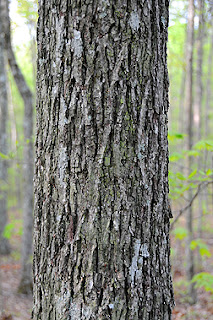Since
Oak is such a broad category, I decided I should probably break it out into several distinct posts. Additionally,
Red Oak is commonly available at hardware stores, making it an excellent first-time wood for a board bow.
For some amazingly detailed instructions on making a
Red Oak board bow, check out
poorfolkbows.com. This is the site that got me started on my first successful bow.
Southern Red Oak
SG .59
The great thing about red oak is that it's easy to find and it's cheap. It's ideal for somebody who is just starting out. Just about every Home Depot or Lowes I've been to has it. They sell it in the perfect size, too. It comes in a 72" long board they call a 1x2, which is actually 3/4 x 1-1/2. Red oak is very porous, and most of the pores are in the early growth rings, so it's important to find a piece with thick late growth rings or else it will seem brittle. Those boards will feel heavier. If you find a board with very straight grain, you don't necessarily need to back it, but it's a good idea to back any board bow. (PFB)
Click here for more info about Red Oak from VT.
Here is the end result of the first bow I made that didn't break - I broke two before this one. They broke because I thought I could just make a bow from any old piece of wood and bend it a lot. Turns out there's just a little bit more to making bows than thinning and bending wood!
 |
| Red Oak board bow, fiberglass tape backed, 45 lbs @ 30" |
It ended up being a little stiff-ended, but I'm okay with that. It's super smooth, and feels just right to me. I was blown away by how well it turned out. The key to it was picking GOOD WOOD. Read the PFB blog, try it out, you won't regret it.
The second bow I made from
Red Oak was this one, a small 5 lb bow for my 5 year old son. It also turned out very well, and shoots nicely. It's fun to shoot non-arrow projectiles with it, such as chopsticks and soda straws with fletching.
 |
| Red Oak board bow, linen backed, 5 lbs @ 18" |
Sources:
Choosing Woods by Tim Baker (TB) Unless noted, SG figures are from Choosing Woods by Tim Baker.
Poor Folk Bows (PFB)









